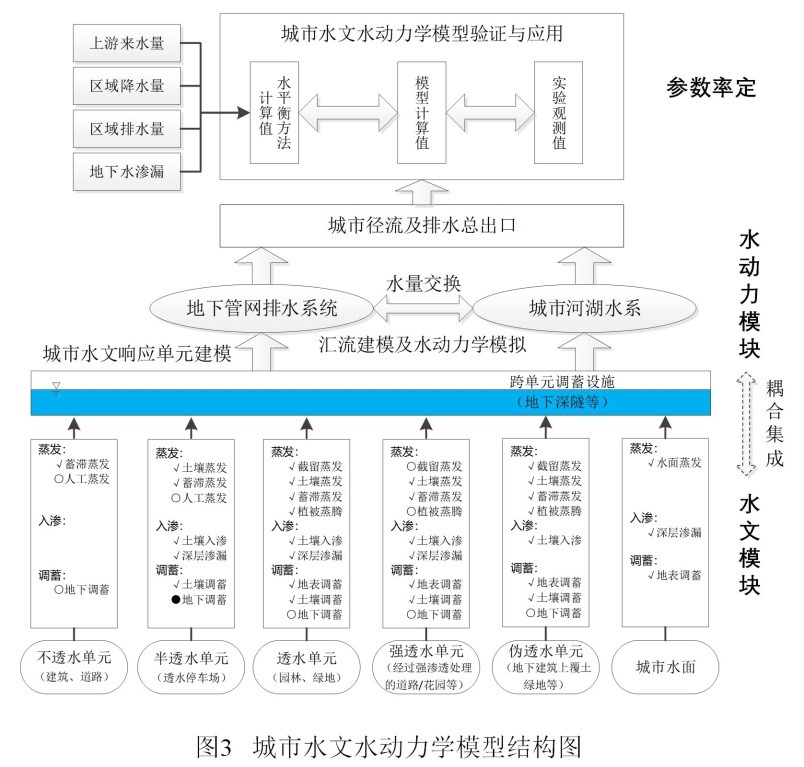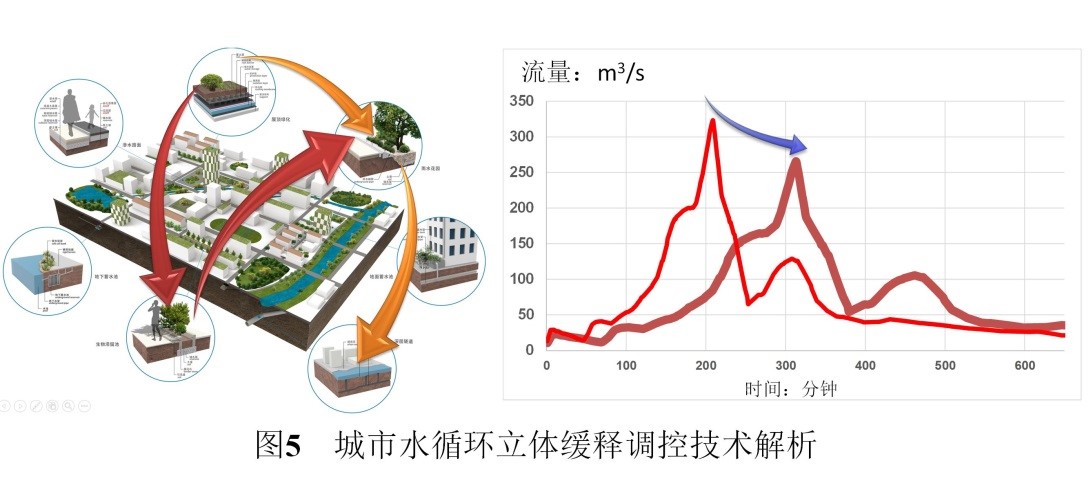LIU Jiahong, WANG Hao, GUAN Tiansheng, et.al
Background
With the global climate change and rapid urbanization, problems such as urban floods, water environment, water resources and water ecology are becoming increasingly prominent. Therefore, low impact design or development (LID), or sponge city, with the aim of coping with those problems, is becoming the solution to improve urban ecological civilization in the new era and the future construction of cities. These achievements systematically analyze the mechanism and law of urban water cycle evolution, proposes sponge city system balance theory and core technologies in construction, and carries out engineering demonstration projects, which has greatly promoted the development of urban hydrological science and engineering.
Content
We analyzed essential issues concerning LID, developed key technologies related to water hydraulic cycle including controlling and monitoring technologies of water quality and quantity, and carried out implementation of such technologies. The complexity and difficulty of this project requires coordinated innovation among research institutions, urban design companies and high-tech industries. To form the balance theory, we made contrastive analysis between traditional communities and LID communities in terms of their hydraulic response mechanisms. We tackled problems such as runoff yield and concentration calculation of underlying surface with high spatial variability and large-scale complex pipe network simulation. And an urban hydrological and hydrodynamic coupling model was set up, which can be used for flood control, water quality monitoring and rainwater utilization. We developed technologies for water quantity adjustment for urban water cycle, which boasts solutions and models from a multi-dimensional basis.
Scale and Distribution
The findings have been applied in 11 LID cities such as Xiamen, Pingxiang, Fuzhou and Wuhan, covering eastern, western and central regions of China and spanning over the north and south climate zones. Key technologies are listed in the solution mix for national environmental protection by a series of large enterprises and institutions including China Urban Planning and Design Institute, China State Construction Engineering Corporation (CSCEC). Therefore, the innovative achievements have effectively promoted urban hydrological development and provided technical support for LID cities construction and ecological civilization construction.
Major Innovative and Technological Contribution
1. We established the balance theory of LID, incorporating three underlying basic mechanisms, and proposed scientific approaches for LID city construction.
2. We explored mechanisms for runoff yield and concentration calculation of underlying surface with high spatial variability and made breakthrough in large-scale complex pipe network simulation. In addition, we solved a series of problems concerning coupling models for pipe network and water cycle, by setting up a city hydrological and hydraulic coupling model. As a result, we are now able
to make quantitative diagnosis for urban water cycle and maintain its balance.
3. We developed key technologies for urban water cycle adjustment and management, urban waterlogging control and rainwater utilization.
4. We innovated a series of new technologies addressing traditional problems haunting sewage process.
Result and Technological Output
We published 38 research papers, with 24 included in SCI/EI, applied for 25 patent licenses, and published one monograph on related field and 8 industrial standards.
Economic Benefits
The technologies developed in the project are of key importance for China Union Engineering Co., Ltd., a partner with Xiamen Urban Planning and Design Institute and IWHR. The corporation has long been committed to rural sewage processing and urban black and odor water control. The corporate’s utilization of those key technologies, the total profit exceeded 284 million yuan in the last three years.
Social Benefits
1. The project promoted China’s technological capability in LID city development. Technologies were widely applied in major cities such as Xiamen, Fuzhou, Wuhan and Shenzhen, and utilized by large urban design organizations such as China Railway Construction Bridge Engineering Bureau Group CO., LTD and China Construction Water and Environment CO., LTD.
2. The project enhanced the public’s understanding towards LID and formed cutting-edge technical personnel, who has carried out nearly 100 technical trainings for the public and for government divisions in countries joining the Belt and Road Initiative, to improve their knowledge about LID. Personnel heading the project won the national prizes such as the “National High-level Specialists Funding”. And we had trained 20 graduate and postgraduate students, forming a technical team with world-leading standards.
Environmental Benefits
The water quality in urban areas and the living condition have been improved. In Xiangan New Demonstration District, the water quality cross-section monitoring reached level V, with some exceeding level IV, showcasing water quality improvement. In terms of the key water bodies Xinyang City, such as the main drainage channel, indicators show that there are no black and odor water anymore. As a result, the surrounding areas witnessed improved living environment conitions and increased land value.
Ecological Benefits
The achievements of the project have significantly reduced the risk of flooding. During the Meranti and Maria super typhoon strike, there was no obvious waterlogging in two pilot area in Xiamen.

Urban Hydrological and Hydrodynamic Structure

Demonstration of Urban Water Cycling Control








